I show a grid with parent data and need to show icon if it has a relevant child row(s) exist. My DB is in SQL Server 2008. Let me simplify, I've the following two tables -
Order (PK : ID)
File (PK: FileID, FK: OrderID)
An Order can have zero or more files related to it. The File table has a column OrderID which holds FK reference to Order. Now, I'm displaying a grid which lists all the Orders and I want to display an icon image indicating if that Order has any child rows (files) or not.
Here's a tricky way I've experimented but not sure how efficient/scalable it is -
SELECT DISTINCT o.ID, o.OrderNum, ...
,(CASE f.ID/f.ID WHEN 1 THEN 1 ELSE 0 END) as FilesExist
...
FROM Order AS o LEFT OUTER JOIN dbo.FileHeader as f ON f.OrderID = o.ID
The CASE statement seems to work perfectly as required. It'll return 1 if one or more file(s) exists, else 0. If multiple file rows exist then it will try to repeat the Order row for which I've added the DISTINCT and I'm not selecting f.ID but f.ID/f.ID which will be 1 (it exists) and 0 for null (doesn't exist). I've learned that JOINs are better than inline SELECT COUNT(*) statements.
I've tested and it works but I need expert opinion and need to make sure that this is the best way of doing it. This is a very simple example but my SELECT statement is complex as there are many lookups and its going to be a costly fetch so I need to make sure its scalable.
Thank you.
EDIT #1: To conclude - either it is going to be internal SELECT with a COUNT(*)
SELECT c.ClaimNo,(SELECT COUNT(*) FROM dbo.FileHeader AS f WHERE f.ClaimID = c.ID ) AS FilesHExist
FROM dbo.Claim AS c

or the LEFT OUTER JOIN approach that I've mentioned.
SELECT DISTINCT c.ClaimNo, (CASE fh.ID / fh.ID WHEN 1 THEN 1 ELSE 0 END) AS FilesHExist
FROM dbo.Claim AS c LEFT OUTER JOIN dbo.FileHeader AS fh ON fh.ClaimID = c.ID

Attached two images of query execution plan. Kindly suggest which one is better.